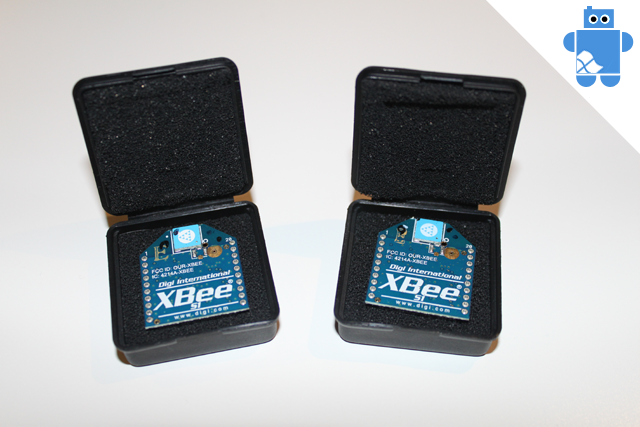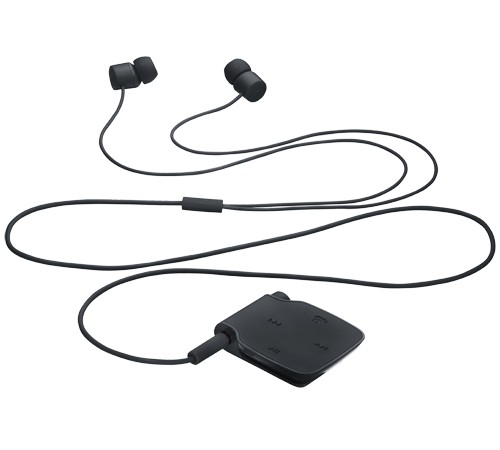The future is Wireless
Les téléphones Android ont le droit en ce moment à un paquet de petits robots qui se pilotent en Bluetooth. Malheureusement, il y a bien du Bluetooth sur Windows Phone, mais de pas de profil SPP (Serial Port Profile) donc pas de possibilité de piloter des appareils en Bluetooth.
Quelques exemples de petits robots sympas : Phonybotz, Gosphero.
Le port série ayant été vaincu, il s’agit de passer au niveau supérieur : le Wireless.
Android phone have access to a bunch of little robots which can be controlled over Bluetooth. Unfortunately, Windows Phone is Bluetooth compatible, but no SPP profile (Serial Port Profile) so, no possibility to control devices through Bluetooth.
Here are some examples of cool little robots : Phonybotz, Gosphero.
As the serial port is now complete, the challenge is to pass to the next level : Wireless.


Ma première idée : le XBEE.
Je viens de recevoir 2 modules XBEE S1.
My first idea : XBEE.
I just receive 2 XBEE S1 modules.
Je vais tester tout ça bientôt en association avec le cable port serie pour Windows Phone.
Les soucis se profilent déjà :
- C’est cher ! il faut 2 modules pour créer le canal sans fil et chacun coute 30€.
- Les XBEE sont duplex mais la vitesse de communication minimum acceptable est de 1200bps. Aujourd’hui, le cable port serie pour Windows Phone permet d’émettre à 9600 bps mais de recevoir à 600 bps. Je ne pourrais utiliser la communication que en transmission donc limité à une utilisation « télécommande ».
- Pas super pratique puisqu’il faut relier le câble série au Windows Phone ainsi qu’au XBEE et ajouter une alimentation 5v…
I am going to test all that in association with the serial port cable for Windows Phone.
Troubles are already here :
- That’s expensive ! It requires 2 modules to create a wireless channel and each one has a cost of 30€.
- XBEE are duplex but the minimal communication speed required is 1200 bps. Today, The Windows Phone serial port cable allows 9600 bps in transmission but only 600 bps in reception. I will only have the capacity to use the transmission so, it is limited to a « remote » application.
- Not really easy to use because, it requires to connect the serial port cable to the Windows Phone, a XBEE module and to add a 5v power supply…
Autre idée ! Windows Phone dispose du profil A2DP en Bluetooth. Ce profile permet le streaming audio du téléphone sur un device compatible.
En utilisant un récepteur A2DP raccordé au câble port série pour Windows Phone, la solution semble beaucoup plus sympa.
- C’est le son qui voyage et pas le signal série.
- On utilise le Bluetooth du mobile, pas de bricolage nécessitant de brancher plein de choses sur le Windows Phone.
- 1 seul récepteur à acheter, donc moins cher que 2 XBee
- Le profile A2DP ne permet pas un échange duplex donc on reste en mode « télécommande » mais c’est déjà cool.
Another idea ! Windows Phone is compatible with the A2DP Bluetooth profile. This profile allows to stream audio signal from the smartphone to a compatible device.
By using a A2DP receiver connected to the Windows Phone serial port, the solution seems a lot nicer.
- That’s the sound which travel and not the serial data.
- We use the mobile bluetooth, no trouble of homemade hacking that requires to connect a lot of stuff to the Windows Phone.
- Only one receiver to buy, so less expensive than 2 XBEE modules.
- A2DP profile doesn’t allow a duplex communication so we stay in a « remote » application but it is already really cool.
Pour tester ça, j’ai commandé un Nokia BH-111.
To test that, I ordered a Nokia BH-111.
On retrouve des puces intégrables qui permettent l’accès au profile A2DP, comme ici chez FREE2MOVE.
We find some chips that allow an access to the A2DP profile , like here at FREE2MOVE.

Vivement que tout cela arrive que les essais puissent commencer !!
I am in a hurry to receive all that and to start testing !!
Welcome !
WPBots.com is a blog which talks about robots made in C# based on .Net MicroFramework and Windows Phone.Articles récents
- SmartBot, the Smartphone Robot – now even smarter!
- SmartBot, the smartphone robot
- SmartBot Mini : Next Episode
- SmartBot Mini : The mini robot for Smartphone
- New Windows Phone robot : little teaser
- Windows Phone Bluetooth serial port – It works !
- Bluetooth trial – part 1
- The future is Wireless
- Thank you !
- My first Windows Phone robot – Part 3
- How to engrave a PCB with a YAG laser
- My first Windows Phone robot – Part 2
- A printer for Windows Phone
- Distance measurement with Windows Phone
- My first Windows Phone robot – Part 1
- A keyboard for Windows Phone
- Windows Phone serial port – V1
- Windows Phone robots
- Once upon a time…




